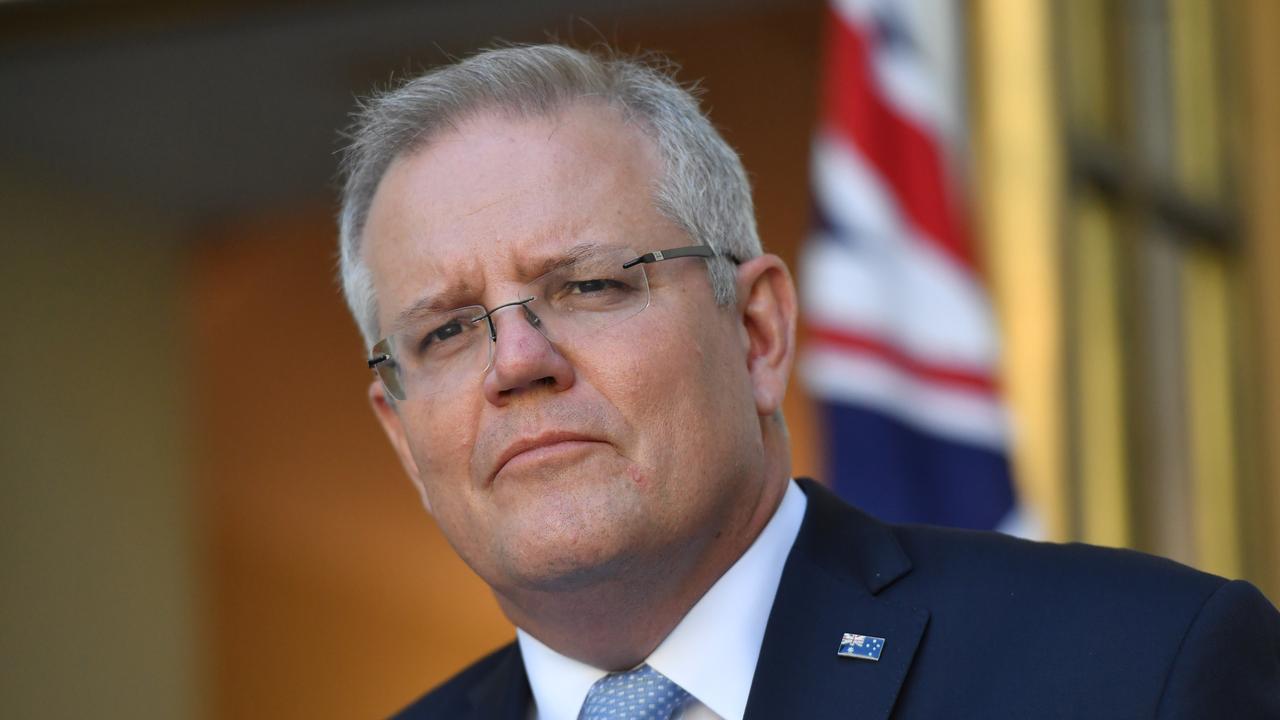Coronavirus stimulus package: Who gets extra money and when will it arrive?
Millions of Aussie households will get a welcome pile of cash from the Government within days – but if you’re not one of them, this is why.
The Federal Government has just announced billions of dollars in stimulus in a desperate bid to soften the economic blow caused by the unprecedented coronavirus crisis.
On Sunday, Prime Minister Scott Morrison revealed a massive $66.1 billion package, which came just days after an initial $17.6 billion platform.
But even though more than six million of us are set to benefit, there’s still a lot of confusion about the payments and how they will work.
RELATED: Will I get a refund from my airline?
RELATED: Virus sends house prices into free fall
So who gets the money and when will it actually arrive?
The good news is eligible Australians won’t have to do much to get their hands on the cash.
Under the first round of stimulus, around 6.5 million Australians on government benefits such as the Newstart and Carer Allowance and Family Tax Benefits will receive a $750 payment.
Those payments will be paid out from next Tuesday on March 31 – and you won’t have to lift a finger to claim it.
It will be processed by Services Australia automatically, and those with existing bank details with Services Australia will simply find the cash in their accounts.
The second round of stimulus focused largely on welfare recipients again as well as small business, with existing and new recipients of the JobSeeker Payment, Youth Allowance jobseeker, Parenting Payment, Farm Household Allowance and Special Benefit receiving increased payments of $550 a fortnight for the next six months.
About five million social security and veteran income support recipients and eligible concession card holders will also receive a second $750 payment from July 13.
Again, it will be paid automatically into your account registered with Services Australia.
Meanwhile, small and medium businesses with a turnover of under $50 million, along with not-for-profit charities, will also be eligible for a tax-free cash payment of up to $100,000.
And under the Coronavirus SME Guarantee Scheme, the government will guarantee half a bank’s loan to a small or medium enterprise impacted by the virus.
The Government is also temporarily increasing the threshold at which creditors can issue a statutory demand on a company and the time companies have to respond to statutory demands they receive.

So why are small businesses and welfare recipients being given a helping hand while ordinary working Australians seemingly miss out?
Leading independent economist Saul Eslake said the government was focusing on small business and welfare recipients for two important reasons.
And he said it was more appropriate to describe the government’s measures as a “rescue package” rather than a stimulus package because at this stage, it was all about salvaging the economy.
“First of all, the Government is making the a assumption that big business can afford to look after itself and its employees – Qantas is a big business and people who work there might tell a different story, but certainly big business owners don’t have their homes on the line and there’s usually better access to credit as banks are quite happy to lend to big companies,” he said.
“But small business employs around 45 per cent of the private sector workforce and are typically in a much more vulnerable financial position – in the first place, they don’t have access to equity, they may be financed by a mortgage secured on the owners’ home, and while there will always be Coles and Woolies and BHP, the concern is most small and medium businesses don’t have sufficient finance or other resources to survive a short or extended period which might well be zero revenue.
“That’s what the aim is here – the government is not trying to prevent a recession … which almost certainly will happen, but it’s trying to minimise the impact of a downturn in real GDP which could be the worst we’ve seen since at least WWII. They are trying to keep people on the payroll, or make sure when this is over, they have a job to come back to.”
And Mr Eslake said there was also a straightforward reason why the government was also focusing on welfare recipients.
Firstly, there will be increased support for people who lose their jobs as a direct result of COVID-19 and the usual rules surrounding those payments will be relaxed, to ensure people get the support they need more quickly and easily.
And secondly, money is going to households with little to no cash to spare – which means they’re far more likely to spend it.
If payments were made to wealthier Australians in secure work, the fear is the money could be stashed away in savings, on a mortgage or in superannuation rather than circulating through the economy now when it was most needed.
“The government is now providing two $750 payments to about 5.5 million Australian households on some form of social security benefit,” Mr Eslake said.
“For the most part, these households likely have nothing else to spend, and so the theory is the money will be put back into the economy.”
Mr Eslake said he “certainly wouldn’t begrudge giving money to the poorest people in society”, but said the concern was with so many businesses now shutdown or operating in a limited capacity, it might reduce the amount of cash being spent.
He said it would be a smart move to restrict any future payments to when the rules were relaxed and most businesses had reopened.
Originally published as Coronavirus stimulus package: Who gets extra money and when will it arrive?




